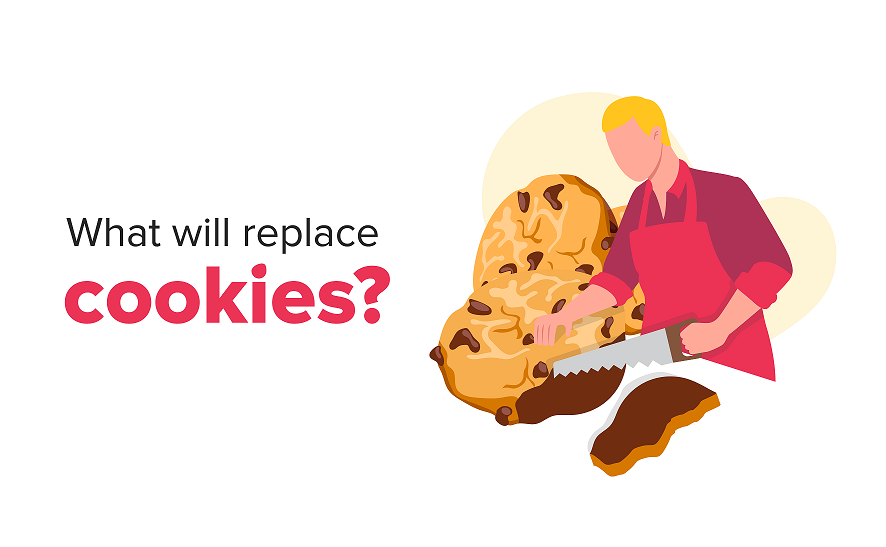Adapting to the New Cookieless reality: An Expert Update for Publishers
Welcome to a new piece in Yieldbird’s series, drawing from our own research into the significant shifts in the programmatic…

In the original scenario proposed by Google, Publishers and Online Advertisers were already in the starting blocks prior to the global change planned for March 2022, involving the discontinuation of 3rd party cookies by the Chrome browser.
However, in mid-2021, Google announced a change in both its timetable and its current shape, which meant that cookies would remain until the second half of 2023. And though the date seems quite far off, it is only the briefest of respites; and some options are slowly being phased out.
So how to optimally approach the steps that need to be taken over the next 18 months? And what will happen if we decide to drift off to other tasks, hoping against hope that things will somehow pan out?
The future cookie-free landscape is sometimes called the Cookiepocalypse, and not without reason – the Internet depends on all sorts of cookies. However, “3rd party” cookies are tiny files that create our individual identifier and support the actions of Advertisers in tailoring advertising messages to our interests and needs as precisely as possible. Their impact on the dynamics and traction of the Online Advertising ecosystem is unquestionable, so it is no wonder that there are more and more solutions on the market, replacing some of the functionality of cookies and possible strategies for securing revenues.

However, having a wide choice is not a solution in itself. Many question marks remain valid today. To name a few, when working with Digital Publishers, we may enumerate: How will the market behave after the change? Which solutions will become the new standards? How effective will they be? What will be the real impact of the changes on Publishers’ revenues? Pubs have taken very different approaches to the subject. The largest were already prepared in advance of the first, postponed date. However, many smaller players have yet to take decisive precautionary measures
Discussing a possible replacement for 3rd party cookies should start with the initiator of the changes, which is Google itself. However, the technology giant has not left Publishers and Advertisers empty-handed as it has created the Privacy Sandbox initiative to build alternatives to the most crucial cookie functionalities, together with the participants of the Supply Chain.
As part of this solution, a number of APIs have been created, i.e. the provisions of communication rules between programs and applications, security aspects such as attribution, capping, fighting spam and invalid traffic (fraud, advertising fraud), and two solutions essential for Advertising:
FLoC (Federated Learning of Cohorts) – an algorithm that assigns a user to an “interest group” by giving him an identifier that further allows advertisers to target based on the interests of a specific cohort;
FLEDGE (First Locally-Executed Decision over Groups Experiment) – a remarketing solution designed to prevent third parties from tracking user browsing behavior.
A characteristic feature of both solutions is that it is the browser and not external technology platforms used by Advertisers that stores information about the interests of users. The behavioral data of individual people remain safe on the devices we use because, in the eyes of Advertisers, we become a relatively homogeneous group, a cohort.
Another approach, in which Advertisers reach individual users instead of a group, is presented by the second category of solutions – Universal Identifiers. In this scenario, we still rely on the cookies or PID (Process ID) files stored in the html5 clipboard of the user’s browser. However, they are limited to 1st party only, meaning they will only work while you are on the same site. Notably, the linking of identifiers related to a specific user from multiple domains takes place on the side of the technology provider. Depending on the method of such a correlation, we can distinguish two categories of identifiers:
Deterministic – identifiers are based on an e-mail address or other login details (for example, a phone number) provided directly by users, and therefore identify the same person in many domains and devices with a very high probability and with a greater value for advertisers (examples: Unified ID 2.0, Liveramp ATS);
Probabilistic – no login required; they combine identifiers based on a number of individual information, such as operating system, IP address, user agent string, timestamp. Based on their combination (with some approximation), it is determined whether the given IDs represent the same user (examples: SharedID, ID5).
It is a good practice for both types of identifiers to be implemented simultaneously because they complement each other. However, it is worth noting that Google does not support the above solution and it will have significance for other sources of demand – especially Bidding Header, which is put on by everyone who cares about diversified sources of income.
In the new reality, what will remain the same is the value of 1st party data. Agencies and media houses still rely heavily on direct transactions (deals) and it sometimes happens that in this model the vast majority of the space they use remains available. They rely on data provided by Publishers, especially those with whom they have a longer relationship. Especially in these transformative times, direct transactions represent one of the few sources of stable and comparable data in the midst of the chaos of new solutions.
Publishers who have deals can remain calm about this revenue stream.
While plotting your own course, you can find a plethora of other solutions. It is worth mentioning here three solutions that have recently enjoyed considerable market interest:
PPID (Publisher Provided IDentifier) - functionality available from the Google AdManager platform (currently in beta), can be used to create segments based on the interests of users visiting specific websites or sections of websites (sports, technology, cooking, etc.), these segments can be sold for through dealers (and in the future probably also through the Open Market).
Clean Rooms – platforms that combine anonymized data of many pages. Until now, they are mainly used by technology giants Google and Facebook, they are quite complex and resource-consuming. Independent suppliers of such technology are now gaining in importance.
Single Sign-On solutions – keeping users logged in on all publisher sites allow you to extend the range for collecting data about a single user.
Being aware of how many possibilities exist and are still being developed on the market, it is worth summarizing once again briefly what trends we can observe on the Publishing market. Many Publishers have tested and implemented popular market solutions, such as universal identifiers.
The largest ones have invested in their own databases which will ensure security in the context of 1st party data. They also have a well-maintained advertising setup that is ready to use all data both in Header Bidding and as part of Google AdManager (because it is the set-up most often used by the largest Publishers). Publishers from this segment also usually have well-developed sales of their own connected with buyers, knowing as they do their buyers’ expectations and having products based on the desired data.
It should also be noted that many Publishers, especially those for whom Open Market accounts for the majority of Programmatic revenues, are delaying taking steps in order to determine whether a leader in identification technology will emerge. A positive trend following the announcement relating to the withdrawal of third-party data, Publishers have begun to take a look at their advertising spaces, paying attention to their quality, up-to-date solutions, and available formats.
Behind all the activities in the area of privacy, there remains the well-being of users and the need to rebuild their trust in Internet technologies within the context of data privacy.
LET’S GET IN TOUCH!
Do you have any questions regarding third-party data withdrawal?
Please feel free to contact us – our team will be more than happy to discuss it with you!

Piotr Niedziela
Ad Optimization Expert
publishers@yieldbird.com

Bartłomiej Oprządek
Regional Growth Director
Try all the possibilities of Yieldbird Platform